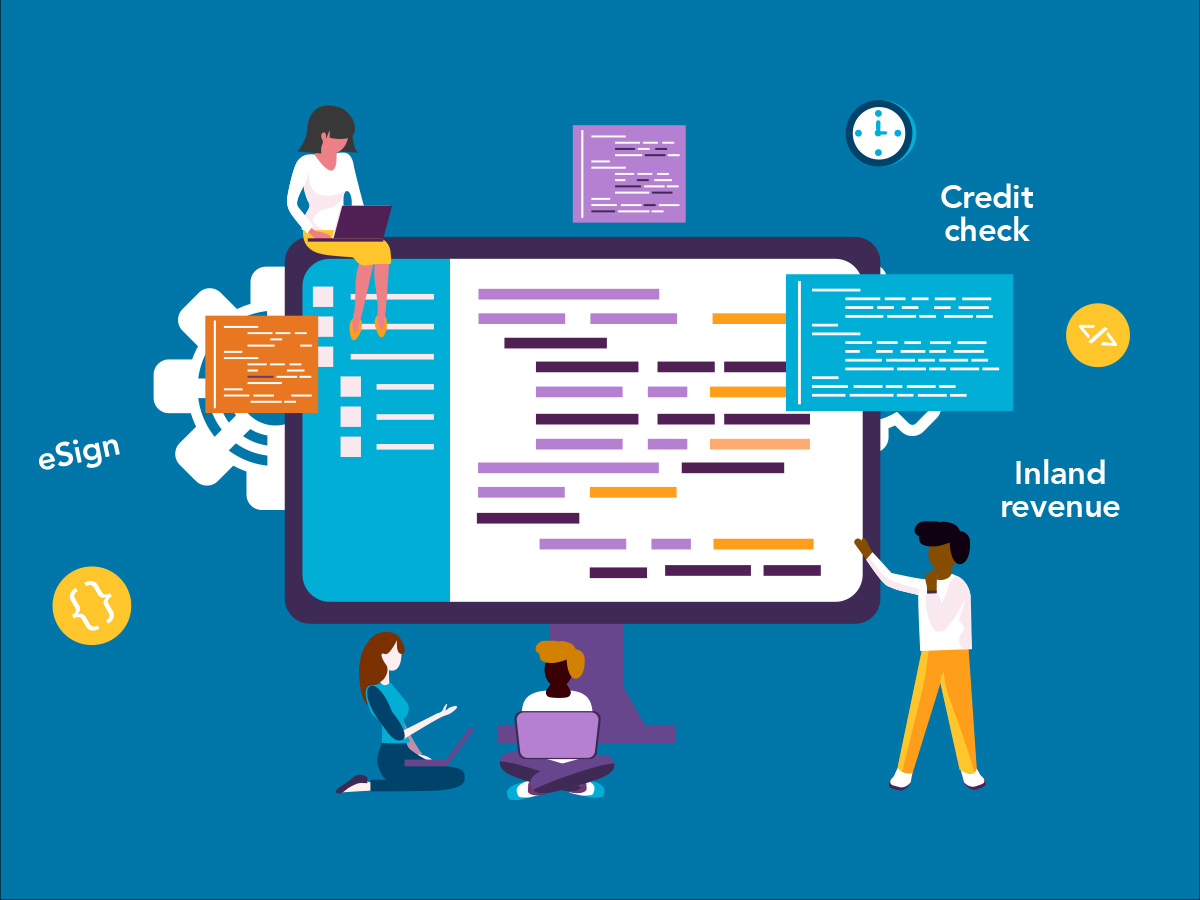At root, application programming interfaces (APIs) enable communication between the software applications you use to complete tasks and solve problems. Without that communication, the different parts of your business are not speaking to one another. The upshot doesn’t need explaining.
Banking, like retail before it, is increasingly digital, and APIs are now critical for financial institutions (FIs). Today’s borrowers have high expectations of their interaction with technology, and many FIs realize that APIs are essential to the seamlessness of those interactions.
APIs are no longer relegated to back-end IT strategy only. They’re a lead component in the entire online lending experience, bottom to top, code to customer. Everyone from leadership downwards needs to get familiar with the opportunity they offer—and the risks they bring if you get them wrong.
We do a lot of work with lenders to sort out their approach to APIs and prepare them to deliver seamless digital services to their customers. Here are four key tips you should consider:
Think ecosystem
APIs don’t exist to make one thing communicate with another. Properly used, their job is to make everything communicate better. If you just build an API for limited use between two components, your overall architecture isn’t going to deliver value, and it may even break down. You have to consider the full picture, and how your APIs complement one another. Ian Nelson, Managing Director, Q2 EMEA says, “It’s like an ecosystem, or an organism—it needs to grow together, and be maintained together, continuously”.
And think evolution
API architecture functions like an ecosystem or organism in another way too – ideally, it should permit evolution. It’s really important that lenders don’t just chuck APIs at a singular problem or set of requirements only. As a lender, you need your architecture to be adaptive. You want to be able to add new products, capabilities, and exceptions. Making everything fixed up-front isn’t going to deliver that. Taylor Adkins, VP of Product at Q2, says that “lenders need to make sure that the system architecture remains open and flexible so that when the game changes, new tools and capabilities can be quickly iterated, tested, and added.”
Strategy – it’s really important to plan
We said earlier that you have to plan out how your APIs are going to work together. That should happen as part of a strong planning stage, before you begin building. The strategy needs to be built by both the business and IT – otherwise, your delivery goals may not be fully realised. IT on its own can’t understand what the business really wants, and the business doesn’t typically have a full understanding about technology infrastructure. Also important to your strategy is mapping out the entire customer journey to see where all your APIs are going to connect. There is no point adding or improving just the API that enables customer-facing technology. You have to go the whole way and build or fix the back end, too.
Establish the right team
People are going to make or break your API strategy. As we indicated above, it’s important to engage both the business leaders and your own IT team at the ideation stage. And if you’re using an implementation partner, include them at this stage. For the simpler back-end API development, using your IT team may suffice. But for the more complicated work, it actually pays to bring in partners who can develop for you. Experts help keep iterations at a minimum, saving both time and money, and delivering a superior product in the end. Partners offer another advantage too: they can actually help train your teams, preparing staff for a future of rolling maintenance and development.
The CEO of one of our specialist lenders has some advice for lenders looking to make the leap: “API technology is complex. Working out how to keep it flexible, scalable, and secure while making sure it delivers value is even more complex. But it’s business-critical now. Be sure to make the right decisions first time round.”
These tips will help as you consider APIs for your digital lending transformation and beyond.
Learn more about Q2 and our approach to digital lending by visiting our Beyond Transformation web site.





